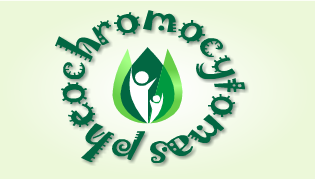PheochromocytomaS
Pheochromocytoma is a central neuroendocrine tumor of the adrenal medula arising symptomatically from a functional abnormality within the chromaffin cells (pheochromocytes) that produce excess adrenaline. The release of excess adrenaline can cause a variety of symptoms, such as headache, anxiety, nervousness, hypertension, sweating, racing heart, tachycardia or palpitations, pain in the lower chest or upper abdomen, weigh loss, nervous tremors, nausea with or without vomiting, and heat intolerance.
Pheochromocytoma is a medical term used to describe a neuroendocrine tumor; the medical term is derived from three greek words, phaios/chroma/cytomas meaning dark/colored/tumor cells.
More than one thousand new cases are diagnosed each year in the United States alone.
Causes
Pheochromocytoma is a congenital disease, which can be caused by an inherited genetic mutation, about one third of pheochromocytomas pass through familial traces. Recent studies confirmed that RET, VHL, and NF1 are the mutated genes responsible for most cases of pheochromocytomas, less commonly, these tumors can grow from the ganglia of the sympathetic nervous system.
Differential diagnosis of pheochromocytoma is carried with:
- Benzodiazepine withdrawal syndrome
- Essential hypertension
- Hyperthyroidism
- Mercury poisoning
- Paroxysmal supraventricular tachycardia
- Renovascular hypertension
Cancers with underlying Carcinoid syndrome may show symptoms similar to those found in pheochromocytoma patients.
Testing
- 24 hours urinary catecholamines and metanephrines screening tests
- Serum catecholamines: measuring adrenaline compounds in the blood
- X-ray of the adrenals
Treatment
First step: perioperative treatment
- Combined alpha and beta blockers
- Blood pressure monitoring
- High sodium diet
- Beta blockers
- Calcium channel blockers
- Metyrosine
High sodium diet: it is widely known that Sodium molecules (Na) attracts water, and a high-sodium diet drive water (interstitial fluid) into the blood vessels (intravascular fluid) and increases the Blood plasma volume (increased intravascular fluid), thus increasing the volume of blood.
A fact that people on high sodium diets are more obese than those consuming less amounts of salt.
Food rich with salt
- Table salt and baking powder
- Bouillon cubes
- Soy Sauce
- Yeast Extract Spread (a good source of protein – B12)
- Bacon and Salami
- Cheese
- Caviar (икра́)
- Pickled Foods
- Fish and Saltwater Crabs
2nd step treatment
- Surgical removal of pheochromocytomas
- Laparoscopic adrenalectomy
- Alpha blockers
Complications
Cardiac arrest and heart failure, which is caused by the toxic effects of excessive catecholamines on the myocytes (muscle cells of the heart).
Pheochromocytomas
Verified by: Dr.Diab (July 27, 2017)
Citation: Dr.Diab. (July 27, 2017). Pheochromocytoma Causes Testing Clinic and Treatment. Medcoi Journal of Medicine, 10(2). urn:medcoi:article3092.















There are no comments yet
Or use one of these social networks